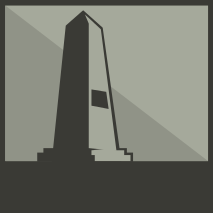
BURNS, Robert David
| Service Numbers: | 16, 43, Officer |
|---|---|
| Enlisted: | 17 May 1915, Holsworthy, New South Wales |
| Last Rank: | Lieutenant |
| Last Unit: | 14th Machine Gun Company |
| Born: | Potts Point, New South Wales, Australia, 1889 |
| Home Town: | Parramatta, New South Wales |
| Schooling: | King's School, Parramatta, New South Wales, Australia |
| Occupation: | Station Manger |
| Died: | Killed in action, France, 20 July 1916 |
| Cemetery: |
Fromelles (Pheasant Wood) Military Cemetery Plot I, Row F, Grave No 1. Inscription: BORN IN SYDNEY, NSW REMEMBERED WITH PRIDE. |
| Memorials: | Australian War Memorial Roll of Honour, Broken Hill War Memorial |
Biography contributed by Stephen Brooks
Robert David Burns was the son of Col. the Hon. Sir James Burns, K.C.M.G., and Mary Burns of Potts Point, NSW. His father founded the Burns Philp Company, one of the largest businesses in Australia for many years. He was a station manager and owner prior to enlisting.
He travelled to Gallipoli on the Southland which sank and was reported to have spent an hour and a half in the water before being rescued. He served with the 6th Light Horse at Gallipoli.
Lieutenant Burns transferred to the 14th Company Machine Gun Corps and was killed in action at Fromelles, France on 20 July 1916, aged 28. He was last seen alive at 6.30 on the morning of July 20, and was then wounded. As a lieutenant in the 14th Machine Gun Company, he was last seen as his guns were ordered to retire. He did not go back with the guns, and it was surmised he might have gone along to other guns. After the war his grave could not be located and he was commemorated on the Villers-Bretonneux Memorial, France. In 2008 a burial ground was located at Pheasant Wood containing the bodies of 250 British and Australian soldiers including Lt Burns. All of the remains were reburied in the newly created Fromelles (Pheasant Wood) Military Cemetery. At the time of the official dedication of the new cemetery on 19 July 2010, ninety-six of the Australians, including Lt Burns, had been identified through a combination of anthropological, archaeological, historical and DNA information.
His elder brother, Captain John Burns, enlisted with the 6th Field Ambulance during 1914 but served on Gallipoli from May 1915 with the 6th Light Horse Regiment. He was returned to Australia during 1916 with tuberculosis. He was sent overseas again before again developing tuberculosis symptoms and was returned to Australia during late 1917. John Burns died at his home in Cootamundra during February 1921, reported as complications from his war service. He is not commemorated on the national honour roll.
Another older brother, Lieutenant James Burns, 14th Light Trench Battery, and 54th Battalion AIF, was recommended for gallantry and sustained a severe wound during late 1918 before returning to Australia and managing the Burns Philp Company until he was over 80 years of age.











